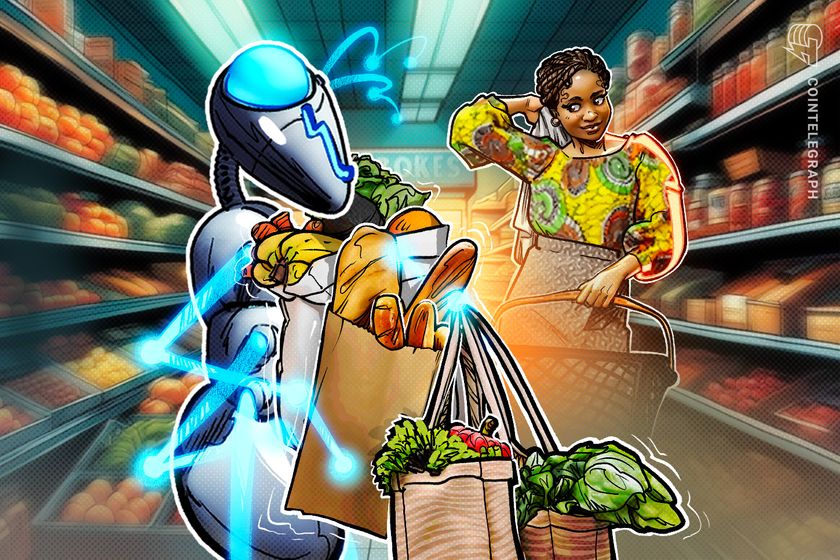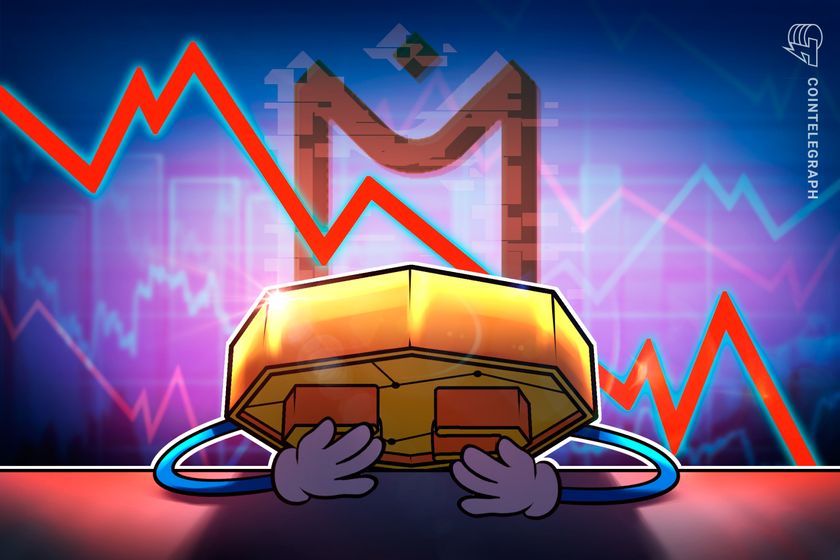

Trump kills DeFi broker rule in major crypto win: Finance Redefined, April 4–11
In a significant win for decentralized finance (DeFi) protocols, US President Donald Trump overturned the Internal Revenue Service’s DeFi broker rule, which would have expanded existing reporting requirements to include DeFi platforms.
Increasing US crypto regulatory clarity will attract more tech giants to the space, requiring existing crypto projects to focus on more collaborative tokenomics to survive, according to Cardano founder Charles Hoskinson.
Trump signs resolution killing IRS DeFi broker rule
Trump signed a joint congressional resolution overturning a Biden administration-era rule that would have required DeFi protocols to report transactions to the Internal Revenue Service.
Set to take effect in 2027, the IRS DeFi broker rule would have expanded the tax authority’s existing reporting requirements to include DeFi platforms, requiring them to disclose gross proceeds from crypto sales, including information regarding taxpayers involved in the transactions.
Trump formally killed the measure by signing off on the resolution on April 10, marking the first time a crypto bill has been signed into US law, Representative Mike Carey, who backed the bill, said in a statement.
“The DeFi Broker Rule needlessly hindered American innovation, infringed on the privacy of everyday Americans, and was set to overwhelm the IRS with an overflow of new filings that it doesn’t have the infrastructure to handle during tax season,” he said.
Crypto needs collaborative tokenomics against tech giants — Hoskinson
The next generation of cryptocurrency projects must embrace a more collaborative approach to compete with major centralized tech companies entering the Web3 space, according to Cardano founder Charles Hoskinson.
Speaking at Paris Blockchain Week 2025, Hoskinson said one of the main criticisms of the crypto and DeFi space is its “circular economy,” which often means that the rally of a specific cryptocurrency is bolstered by funds exiting another token, limiting the growth of the whole industry.
Hoskinsin said that to have a chance against the centralized technology giants joining the Web3 industry, cryptocurrency projects need more collaborative tokenomics and market structure.
Hoskinson on stage at Paris Blockchain Week. Source: Cointelegraph
“The problem right now, with the way we’ve done things in the cryptocurrency space, is the tokenomics and the market structure are intrinsically adversarial. It’s sum 0,” said Hoskinson. “Instead of picking a fight, what you have to do is you have to find tokenomics and market structure that allows you to be in a cooperative equilibrium.”
He argued that the current environment often sees one crypto project’s growth come at the expense of another rather than contributing to the sector’s overall health. He added that this is not sustainable in the face of trillion-dollar firms like Apple, Google and Microsoft, which may soon join the Web3 race amid clearer US regulations.
Bitcoin’s 24/7 liquidity: Double-edged sword during global market turmoil
Bitcoin and other cryptocurrencies are often praised for offering around-the-clock trading access, but that constant availability may have contributed to a steep sell-off over the weekend following the latest US trade tariff announcement.
Unlike stocks and traditional financial instruments, Bitcoin (BTC) and other cryptocurrencies enable payments and trading opportunities 24/7 thanks to the accessibility of blockchain technology.
After a record-breaking $5 trillion was wiped from the S&P 500 over two days — the worst drop on record — Bitcoin remained above the $82,000 support level. But by Sunday, the asset had plummeted to under $75,000.
Sunday’s correction may have occurred due to Bitcoin being the only large tradable asset over the weekend, according to Lucas Outumuro, head of research at crypto intelligence platform IntoTheBlock.
“There was a bit of optimism last week that Bitcoin might be uncorrelating and fairing better than traditional stocks, but the [correction] did accelerate over the weekend,” Outumuro said during Cointelegraph’s Chainreaction live show on X, adding:
“There’s very little people can sell on a Sunday because most markets are closed. That also enables the correlation because people are panicking and Bitcoin is the largest asset they can sell over the weekend.”
Outumuro noted that Bitcoin’s weekend trading can also have upside effects, as prices often rally in calmer conditions.
Bybit recovers market share to 7% after $1.4 billion hack
Bybit’s market share rebounded to pre-hack levels following a $1.4 billion exploit in February, as the crypto exchange implemented tighter security and improved liquidity options for retail traders.
The crypto industry was rocked by the largest hack in its history on Feb. 21, when Bybit lost over $1.4 billion in liquid-staked Ether (stETH), Mantle Staked ETH (mETH) and other digital assets.
Despite the scale of the exploit, Bybit has steadily regained market share, according to an April 9 report by crypto analytics firm Block Scholes.
“Since this initial decline, Bybit has steadily regained market share as it works to repair sentiment and as volumes return to the exchange,” the report stated.
Block Scholes said Bybit’s proportional share rose from a post-hack low of 4% to about 7%, reflecting a strong and stable recovery in spot market activity and trading volumes.
Bybit’s spot volume market share as a proportion of the market share of the top 20 CEXs. Source: Block Scholes
The hack occurred amid a “broader trend of macro de-risking that began prior to the event,” which signaled that Bybit’s initial decline in trading volume was not solely due to the exploit.
Nearly 400,000 FTX users risk losing $2.5 billion in repayments
Almost 400,000 creditors of the bankrupt cryptocurrency exchange FTX risk missing out on $2.5 billion in repayments after failing to begin the mandatory Know Your Customer (KYC) verification process.
About 392,000 FTX creditors have failed to complete or at least take the first steps of the mandatory Know Your Customer verification, according to an April 2 court filing in the US Bankruptcy Court for the District of Delaware.
FTX users originally had until March 3 to begin the verification process to collect their claims.
“If a holder of a claim listed on Schedule 1 attached thereto did not commence the KYC submission process with respect to such claim on or prior to March 3, 2025, at 4:00 pm (ET) (the “KYC Commencing Deadline”), 2 such claim shall be disallowed and expunged in its entirety,” the filing states.
FTX court filing. Source: Bloomberglaw.com
The KYC deadline has since been extended to June 1, giving users another chance to verify their identity and claim eligibility. Those who fail to meet the new deadline may have their claims permanently disqualified.
According to the court documents, claims under $50,000 may account for about $655 million in disallowed repayments, while claims over $50,000 could amount to $1.9 billion, bringing the total at-risk funds to more than $2.5 billion.
DeFi market overview
According to data from Cointelegraph Markets Pro and TradingView, most of the 100 largest cryptocurrencies by market capitalization ended the week in the red.
The EOS (EOS) token fell over 23%, marking the week’s biggest decline in the top 100, followed by the Near Protocol (NEAR) token, down over 19% on the weekly chart.
Total value locked in DeFi. Source: DefiLlama
Thanks for reading our summary of this week’s most impactful DeFi developments. Join us next Friday for more stories, insights and education regarding this dynamically advancing space.



